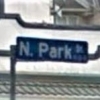
Amalgamation of Victoria municipalities
#61

Posted 28 April 2007 - 10:34 PM
The "classic case of the suburbs screwing the core" can happen without actual amalgamation. It just needs a region-wide decision-making body like TransLink in Vancouver. You could argue that the recent overhaul of TransLink is sort of a de facto amalgamation as far as transit is concerned. And amalgamation has had some readily apparent consequences in terms of suburban mayors like Tremblay in Montreal and Lastman in Toronto defeating the previous mayors of those respective cities, and O'Brien defeating Munter and Chiarelli in Ottawa last year.
One problem is that amalgamation has been built up as an all-or-nothing kind of deal. I suspect an amalgamated Capital Region would indeed see the suburbs ganging up on the core, and I'm quite certain that would be the case for an amalgamated Greater Vancouver. But that doesn't mean that smaller-scale amalgamations, as suggested earlier in the thread, would necessarily have the same effects.
#62

Posted 29 April 2007 - 09:03 AM
#63

Posted 29 April 2007 - 10:39 PM
Sure. Ottawa, Toronto, Montreal, and Halifax were amalgamated. And in every case the costs have gone up
At least we're not generalizing. Amalgamation has both positive and negative impacts in each case. It is my random generalization it was for the overall better in each case.
I'm not that familiar with the amalgamation results in Halifax, but I'll once again be in all three of the others this week, and will enjoy visiting them with their "higher costs".
#64

Posted 29 April 2007 - 11:39 PM
-City of Victoria website, 2009
#65

Posted 30 April 2007 - 06:33 AM
#66

Posted 02 May 2007 - 10:16 AM
Victoria News May 02 2007
If it were really true (your April 25 editorial on “parochial thinking”) that the core area’s generosity in helping to pay to expand the water system to outlying areas will be repaid, we would long ago have received help with our downtown police and social costs.
The core municipalities once owned the entire watershed, dam and other assets worth scores of millions. We haven’t asked to be compensated for sharing ownership of the system, but it does seem unfair that we also have to subsidize the cost of new development outside the core.
More important is the impact on the environment, though. If the water board adopted a “user-pay” system, denser areas that are cheaper to service would not subsidize the extension of the service into costly-to-serve suburban areas such as Bear Mountain and Sooke. The larger lots in those areas consume more water, working against the water district’s conservation policies, and the car travel they generate also put a greater burden on our road and public transit systems.
The amounts involved are substantial – Victoria’s share of the new Sooke pipeline will probably be over $5 million and Esquimalt’s over $1 million.
If we are going to have a single municipality we can all pitch in on everything. What is not reasonable is the “selective amalgamation” the water board is advocating – the low density municipalities don’t contribute to the costs of the downtown, but do expect the downtown to help them pay for expensive utility services when they need them.
Geoff Young,
councillor
City of Victoria
:smt038
-City of Victoria website, 2009
#67

Posted 02 May 2007 - 10:32 AM
Know it all.
Citified.ca is Victoria's most comprehensive research resource for new-build homes and commercial spaces.
#68

Posted 02 May 2007 - 09:39 PM
#69

Posted 23 July 2007 - 12:08 AM
[url=http://www.canada.com/victoriatimescolonist/news/capital_van_isl/story.html?id=59320546-b511-4afa-a243-2c750bf10f7f:d04d2]There will be renewed calls for a shakeup of the Capital Regional District following a decision by the province to split the Comox Strathcona Regional District into two, say local politicians.[/url:d04d2]
Bill Cleverley, Times Colonist
"The CRD ran Langford for 20 years and all we got was a steady stream of traffic headed downtown," said Langford Mayor Stew Young. ...
Young said he would like to see the CRD split into three areas -- the core municipalities, the Saanich Peninsula and the West Shore. That would inevitably lead to amalgamation of municipalities within the three regions, he said.
In a surprise announcement last week, Community Services Minister Ida Chong announced the creation of a new Comox Valley Regional District and a second regional district for Strathcona/Campbell River by December.
Some, like Saanich Mayor Frank Leonard and Colwood Mayor Jody Twa, said Chong may have opened a Pandora's box with the decision. ...
There have been a number of regional districts that have had tensions over the years and Comox Strathcona is one of them, Leonard said.
Typically, the province has been reluctant to step in because each regional district presents its own set of problems that can't be easily corrected with a single piece of legislation, he said.
"She blinked," Leonard said.
"Rather than saying to everyone: 'We're happy with the legislation that's in place now. We're happy with the structures in place now. What we need you to do is work on best practices ... the stock answer that's been used for more than 10 years ... she has blinked. She's now got to come up with a new answer," Leonard said.
"I'm surprised," said Twa in reaction to Chong's decision, adding similar problems likely are to be found throughout the province. "Obviously, there are going to be other parts of British Columbia, based on this decision, who are going to put a case forward to the ministry to split their districts." ...
"Many times I've heard the statement that this region would work better if it was split up maybe into three districts -- the peninsula, the core and the west.
"Geographically, we seem to be different. We seem to be different in how we govern," Twa said. "It would be interesting for us to take a look at that to see if it would work for this region."
Langford Coun. Denise Blackwell, who chairs the CRD, says there's no question there are a lot of people who would like to see the CRD split into three.
"To a large degree it makes some sense. But then when you look at the fact for all this time our pipes are all intertwined for our sewage treatment; we only have one landfill that we share. I don't know how we would exactly do that," Blackwell said. ...
#70

Posted 23 July 2007 - 06:12 AM
It may be easy to split up residential districts but that won't make it any easier to make colwood and Langford into the same town. In the end if the CRD gets split up we just get yet two more government bodies.
Why does Stu Young think it is the CRD that is causing traffic problems in Langford? He might be spending too much time around the Transmission fluid.
#71

Posted 29 December 2007 - 12:16 PM
Amalgamation: 10 years later
Posted: December 28, 2007, 8:01 PM by Barry Hertz Politics, Hall Monitor

The late urban guru Jane Jacobs always seemed to have the soothsayer’s knack for predicting when public policy would ruin a city.
On Feb. 3, 1997, she warned an all-party committee at Queen’s Park against folding together the six cities that today make up Toronto.
“Respect for difference in neighbourhoods is essential,” she said. “Megacity bureaucracies cannot respond with this kind of pinpoint accuracy. It defies common sense to inflict on the citizens and businesses a government that is less responsive than what they have now.”
Was Ms. Jacobs right? Did amalgamation wreck Toronto and the former municipalities of East York, Etobicoke, North York, Scarborough and York?
Jan. 1 is the 10th anniversary of amalgamation. And while it’s clear the amalgamated government is not an unqualified disaster, it is also not the lean, efficient polity of which its supporters dreamed. The megacity has not lived up to the hype.
Promised savings of $300-million per year never materialized. Staff is up, not down. The city employs 4,015 more people today than it did in 1998.
The people of modern Toronto have not gelled. The former suburbs and their poorer residents are increasingly shut out of the bounty downtown, according to a University of Toronto study released in December.
“All the attention and all the money, it seems to be focused more on downtown Toronto,” says Toronto City Councillor Frances Nunziata, who was the last mayor of York. “Unfortunately, in the suburbs like York and Etobicoke, the revitalization is not happening.”
And even the city’s top bureaucrat, Shirley Hoy, readily admits Torontonians feel cut off from the megacity’s council and the colossal bureaucracy that buttresses it. “I know that citizens feel disconnected from their government,” Ms. Hoy, the city manager, says. “I think there is a sense that easy access to city government, as well as meaningful engagement of citizens in issues like planning … they feel we don’t have the effective structures in place yet.”
Mayor David Miller, the megacity’s second boss, sees problems, too. “Amalgamation was rushed. It was based on the wrong idea that there were going to be massive savings,” he said. “It was done against the will of people. Oh, and there was downloading at the same time and a tax freeze. You add those things all up, it was a recipe for chaos and that’s what ensued.”
He also sees the positive side of amalgamation. Toronto can enact sweeping policies and make city-wide planning decisions that would never have made it through six governments.
Its government is larger than that of many provinces. It is the fifth-largest city in North America, behind only Mexico City, New York, Los Angeles and Chicago. That makes it more influential economically and on the world stage.
“I think we’ve now turned the corner,” Mr. Miller says. “The kind of voice I have on the national stage wouldn’t have happened pre-amalgamation.” Amalgamation has also helped some of the poorer pockets of the modern city.
Even Ms. Nunziata, who complains that downtown is soaking the suburbs, concedes the former city of York could never have afforded the new $25-million community centre that is supposed to open at Eglinton Avenue West and Black Creek Drive in 2009. Taxes from the wealthier parts of the city will help pay for that.
When Mike Harris’s Conservative government first pitched the one-city vision at the end of 1996, Toronto already had a long history of amalgamations. In 1953, the province created the Metro level of government, although politicians were not directly elected to it. Thirteen municipalities thrived under its umbrella: the City of Toronto; the townships of York, Etobicoke, Scarborough, North York and East York; the towns of Weston, Mimico, New Toronto, Leaside; and the villages of Forest Hill, Swansea and Long Branch.
In 1967, the 13 municipalities were consolidated into the six cities that preceded the megacity. Councillors were directly elected to sit on Metro council. Al Leach, the former Conservative municipal affairs minister who created the megacity, argues this history lesson is important to understanding the provincial government’s decision to create a single city.
“The amalgamation was just a step in the evolutionary process,” Mr. Leach said in a phone interview from Florida.
Still, that was hardly the only reason the Conservatives backed amalgamation. The merger was supposed to end duplication, cut waste, save money and reduce staff. The fire, parks and transportation departments, for example, would be reduced from six or seven to one. The number of elected politicians would be reduced from 106 to 58, then to 45.
A study by the accounting firm KPMG in late 1996 foretold hefty savings from amalgamating Metro and the six cities. It predicted the move would save $865-million in the first three years, after transition costs, then $300-million every year after that, largely by eliminating thousands of jobs and finding efficiencies.
‘‘I tell you that was totally salacious,” says Alan Tonks, the last chairman of Metro council and head of the transition team that melded the seven governments together. “We always challenged that in the first place because we tried to indicate to the province that the savings had actually been extracted over the 50-odd years of Metropolitan council.”
Mr. Tonks, now a Liberal MP, was right. Amalgamation did not save nearly as much as forecast.
To read the rest of Kelly Grant's feature, be sure to pick up a copy of Saturday's National Post
Photo of Toronto City Hall by Tyler Anderson for National Post
http://network.natio...ears-later.aspx
#72

Posted 29 December 2007 - 12:18 PM
#73

Posted 29 December 2007 - 03:39 PM
#74

Posted 01 April 2008 - 07:48 PM
Originally Posted by VicHockeyFan

Why does it [amalgamation] have to be forced?
G-Man summed it up rather well: Politicians are not going to vote themselves out of a job. I like his idea of a plebicite, but I am not sure how one goes about getting the public to participate in this. It would have to be VERY well organized and publicized (meaning $$$), since the anti-amalgamation forces (the aforementioned politicians fearing for their political lives) will use every asset at their disposal (including our tax dollars) to tell us all the reasons why amalgamation will be the end of civilization as we know it. If anyone knows how to get some serious "grass-roots" interest in this issue more prominently on the public radar, please let me know, as I would be happy to support the effort in any way that I can.
#75

Posted 01 April 2008 - 08:15 PM
#76

Posted 01 April 2008 - 09:03 PM
If someone with a home address in Oak Bay or Saanich can run for office in Victoria, can I run for Mayor of Langford? Or why stop there? Can I run for Mayor of Surrey or White Rock? Kamloops?
-City of Victoria website, 2009
#77

Posted 01 April 2008 - 09:12 PM
Seriously, though: good question around who gets to be on council / in the mayor's seat here, but doesn't get to vote here, and why not? Open it up (the voting rolls). Or else make it really tight -- you don't live here, you can't govern here.
#78

Posted 01 April 2008 - 09:41 PM
#79

Posted 01 April 2008 - 11:31 PM
I've been on the C-FAX afternoon show twice now, along with Ken Kelly of the DVBA and Myrna Borleske from LessGov.com, talking about amalgamation and I'm not optimistic it will happen anytime soon despite the fact it will benefit the region.
#80

Posted 02 April 2008 - 07:13 AM
If Colwood was to join Langford for example, with Colwoods unionized outside workers, and Langfords mostly contracted-out public works, you can bet the former becomes the standard in the new entity. That wouldn't save money.
13 (or is it 12) Mayors and councils salaries are a drop in the bucket compared to overall budgets, so that savings is small.
Use the page links at the lower-left to go to the next page to read additional posts.
1 user(s) are reading this topic
0 members, 1 guests, 0 anonymous users















